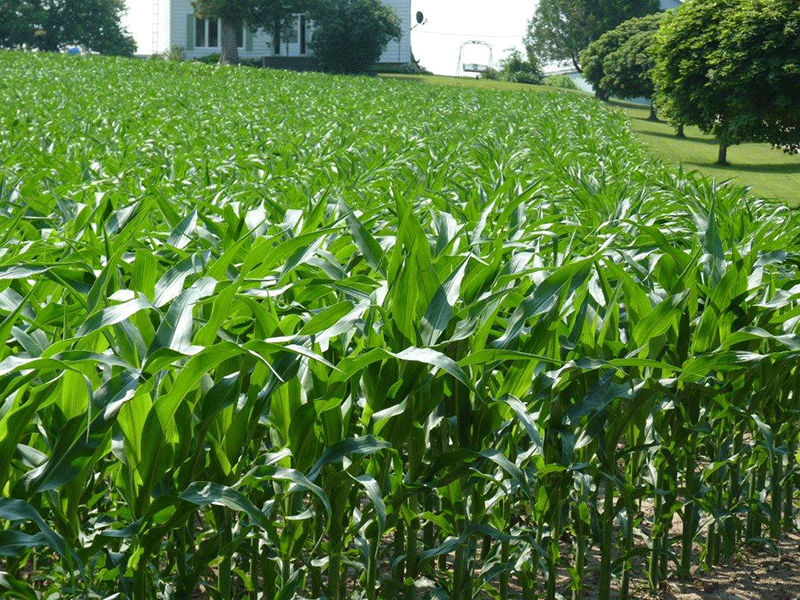Building a 4R strategy
FOLLOWING THE 4RS REDUCES NUTRIENT LOSSES

TWO YEARS AGO, in 2014, Grain Farmers of Ontario, the Ontario Agri-Business Association, and Fertilizer Canada began work on a 4R Nutrient Stewardship Demonstration Farm program. “Through this program we recruited fifteen crop farmers to take part in a 4R pilot project in 2015,” says Mike Buttenham, market development coordinator for the environment and sustainability, with Grain Farmers of Ontario. “Each of these producers agreed to complete a 4R Nutrient Stewardship Plan for at least 80 acres of their farms, have the plan approved, and to make their best efforts to implement it. Now we are taking some of the lessons we learned from the pilot project in helping to shape the 4R provincial program, which will be rolled out in late 2016.”
The 4R Nutrient Stewardship Strategy was originally developed by global fertilizer companies in response to the sustainability of agricultural systems. “The 4R pilot project was initiated by Grain Farmers of Ontario to see how viable it would be within the Round Table on Responsible Soy (RTRS) certification protocol in covering the nutrient management component of this sustainability scheme,” Buttenham says. “However, in light of the recent Lake Erie algae blooms and the upcoming targets and timelines for phosphorus reduction from the Great Lakes Water Quality Agreement, 4R is functioning as a voluntary, proactive solution to addressing some of the concerns with how farmers apply nutrients. It’s now part of a provincial-wide initiative with government, industry, and producer organizations working together with farmers.”
In addition to Grain Farmers of Ontario, partners in the 4R strategy include the Ontario Agri Business Association, Fertilizer Canada, and the Ontario Ministry of Agriculture, Food and Rural Affairs.
WHAT ARE THE 4RS?
The 4Rs refer to four critical guiding principles — applying nutrients from the right source, at the right rate, at the right time, and in the right place. “The 4R approach is all about improving application practices so that there is better nutrient use efficiency and reduced potential for nutrient loss,” Buttenham says. “This isn’t necessarily about applying less nutrients but about working towards nutrient loss reduction.”
Within a 4R Nutrient Stewardship Plan, farmers track and record all crop beneficial management practices (BMPs) they are using that are relevant to minimizing nutrient loss. They also track the performance of implementing these practices using indicators such as yield, quality, nutrient balance, water and nutrient use efficiency, and return on investment.
“We gathered important information through the pilot project about how this worked,” Buttenham says, “and this will help us in implementing the program this year across the province. For example, we found that fertilizer use among the pilot phase farmers varied due to equipment availability which altered the options they had to apply nutrients.”
“We also found that fertilizer use planning is sometimes done from strictly an economic perspective. Also, during the pilot, farmers by-and-large did soil testing only once at most in a crop rotation and that they based nutrient availability on crop uptake and yield,” says Buttenham.
Another major finding from the pilot project was a very strong interest in precision ag and split applications. Buttenham says some of these lessons will greatly assist in the current development of the province-wide rollout.
Although details are still being worked out, it’s likely that farmers, as it was in the pilot phase, will work with a Certified Crop Advisor to complete their 4R Nutrient Stewardship Plans.
Throughout the growing season and afterwards, they will refer back to the plan and then adjust plans and practices for the upcoming year. “Farmers care about the Great Lakes and want to do their part to make sure water quality is the best it can be,” says Buttenham. “We hope that as this program moves forward we’ll have a large number of farmers implement a 4R Plan beginning this fall, and that each year afterwards, the number increases.”
Please stay posted for sign up details and to get your farm 4R certified.
For more information on this initiative visit: http://www.nutrientstewardship.com. •








